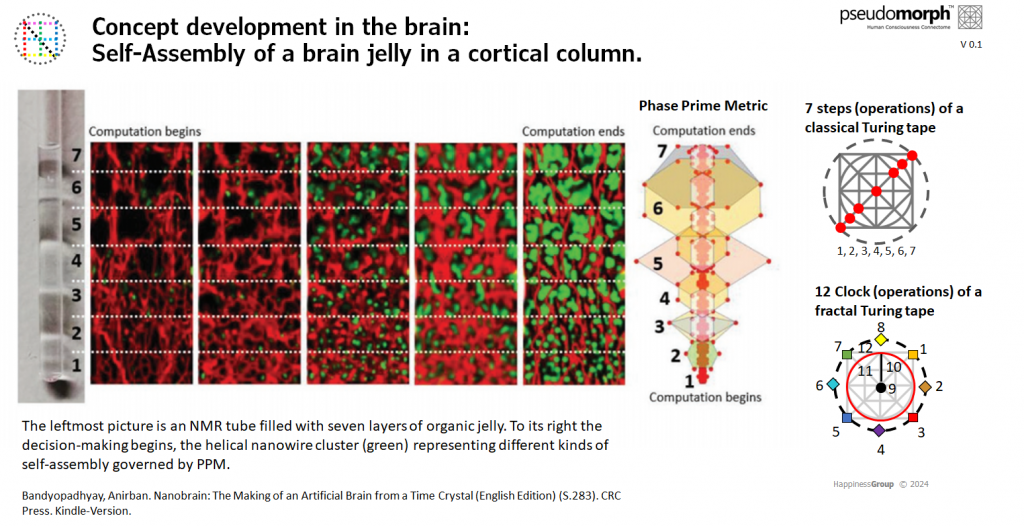
Concept development in neuroscience, particularly in the context of vertical (cortical) column self-assembly, is a sophisticated process that underscores how our brains understand and categorize the world. Cortical columns are fundamental units of the cerebral cortex, the brain’s outer layer responsible for many higher-order functions, including sensory perception, attention, and memory. Here’s how concept development can be understood within this framework:
- Cortical Columns as Processing Units:
- Cortical columns are considered the building blocks of the cerebral cortex. They consist of a vertical arrangement of neurons, spanning the six layers of the cortex, each layer characterized by distinct types of neurons and connectivity.
- These columns are thought to process specific types of information, with each column potentially dedicated to processing certain sensory inputs or computational tasks.
- Self-Assembly of Cortical Columns:
- The concept of self-assembly in cortical columns refers to the brain’s ability to organize these columns during development. This organization is influenced by genetic factors and shaped by sensory experiences.
- The self-assembly process ensures that the cortical columns are structured in a way that optimizes the brain’s ability to process information, learn, and adapt.
- From Sensory Inputs to Conceptual Understanding:
- Concept development in the brain involves moving from simple sensory inputs to complex, abstract ideas. Cortical columns play a role in this process by initially processing basic sensory information.
- Through interactions between cortical columns and higher-order brain areas, the brain integrates simple sensory inputs to form more complex percepts, and eventually, these percepts contribute to the formation of concepts.
- Integration and Connectivity:
- The development of concepts requires the integration of information across different cortical columns and brain regions. This integration is facilitated by a dense network of connections within the cerebral cortex.
- For instance, the concept of an object, like a “chair,” involves integrating visual shape, texture, function, and perhaps even personal experiences associated with chairs. This integration requires coordinated activity across multiple cortical columns and brain areas.
- Plasticity and Adaptation in Concept Development:
- The brain’s plasticity, its ability to change and adapt, is crucial for concept development. As individuals interact with their environment and acquire new experiences, cortical columns can adapt their functioning, refining the brain’s conceptual understanding.
- Learning and memory are integral to this process, allowing the brain to store and retrieve information related to concepts, and to modify these concepts based on new experiences or insights.
- Critical Periods and Sensitive Windows:
- Similar to percept development, concept development also has critical periods or sensitive windows during which the brain is particularly receptive to forming certain types of concepts. Language development in early childhood is a classic example.
- During these periods, the brain’s self-assembly mechanisms and plasticity are geared toward absorbing and structuring information in ways that form the foundation for complex concepts.
In summary, concept development in neuroscience, especially in the context of cortical column self-assembly, is a testament to the brain’s remarkable capacity to organize and reorganize itself in response to internal and external stimuli. It showcases how from the basic building blocks of cortical columns, the brain constructs a complex tapestry of concepts, enabling individuals to understand and navigate the world. This process is dynamic, adaptive, and continues throughout an individual’s life, highlighting the brain’s incredible flexibility and capacity for growth and learning.